Best Tkinter Programming Books to Buy in December 2025
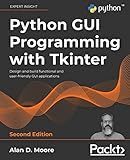
Python GUI Programming with Tkinter: Design and build functional and user-friendly GUI applications, 2nd Edition


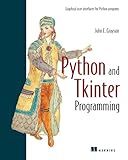
Python and Tkinter Programming
- AFFORDABLE PRICES ON QUALITY PRE-OWNED BOOKS.
- ECO-FRIENDLY CHOICE: REDUCE WASTE BY BUYING USED.
- RELIABLE CONDITION GUARANTEES A GREAT READING EXPERIENCE.


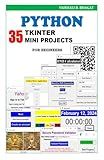
Python Tkinter 35 Mini Projects: Practical guide for begineer (Python Made Practical: 125 GUI Creative Projects and 500 Assignments)


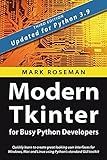
Modern Tkinter for Busy Python Developers: Quickly learn to create great looking user interfaces for Windows, Mac and Linux using Python's standard GUI toolkit


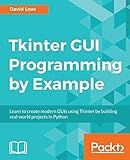
Tkinter GUI Programming by Example: Learn to create modern GUIs using Tkinter by building real-world projects in Python


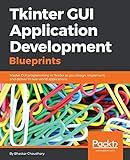
Tkinter GUI Application Development Blueprints: Master GUI programming in Tkinter as you design, implement, and deliver 10 real-world applications


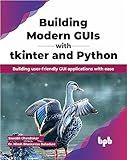
Building Modern GUIs with tkinter and Python: Building user-friendly GUI applications with ease (English Edition)


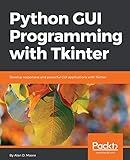
Python GUI Programming with Tkinter: Develop responsive and powerful GUI applications with Tkinter


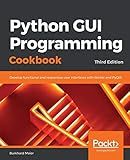
Python GUI Programming Cookbook: Develop functional and responsive user interfaces with tkinter and PyQt5, 3rd Edition



Competitive Programming 4 - Book 2: The Lower Bound of Programming Contests in the 2020s


To create a file chooser using tkinter, you can use the tkinter.filedialog module. First, you need to import this module by adding the following line to your code:
import tkinter.filedialog
Next, you can create a file chooser dialog box by calling the askopenfilename() method from the filedialog module. This will open a dialog window that allows the user to select a file from their system.
Here is an example of how you can create a simple file chooser using tkinter:
import tkinter as tk from tkinter import filedialog
root = tk.Tk() root.withdraw() # Hide the main window
file_path = filedialog.askopenfilename() print("Selected file:", file_path)
In this example, we create a simple tkinter window and then call the askopenfilename() method to open the file chooser dialog box. Once the user selects a file, the file path is stored in the file_path variable, which can be used for further processing.
You can customize the file chooser dialog box by passing additional parameters to the askopenfilename() method, such as initial directory, file types, and window title. Refer to the tkinter documentation for more information on customizing the file chooser dialog box.
Overall, using the filedialog module in tkinter makes it easy to create a file chooser in your Python GUI applications.
What is a Label widget in Tkinter?
A Label widget in Tkinter is a widget that is used to display text or images on a GUI window. It is a simple widget that does not accept user input. Labels are commonly used to provide information or instructions to the user in a graphical user interface.
How to create a file selector in Tkinter?
To create a file selector in Tkinter, you can use the filedialog module that comes with Tkinter. Here is an example code that demonstrates how to create a simple file selector window:
import tkinter as tk from tkinter import filedialog
def select_file(): file_path = filedialog.askopenfilename() print("Selected file path:", file_path)
root = tk.Tk() root.title("File Selector")
select_button = tk.Button(root, text="Select File", command=select_file) select_button.pack(pady=20)
root.mainloop()
In this code:
- We first import the necessary modules tkinter and filedialog.
- We create a function select_file that opens a file dialog using filedialog.askopenfilename() and prints the selected file path.
- We create a Tkinter window root with a title "File Selector".
- We create a button select_button that calls the select_file function when clicked, and we pack it in the window.
- Finally, we start the Tkinter main event loop with root.mainloop().
When you run this code, a window will open with a button "Select File". When you click the button, a file selector window will open, allowing you to choose a file. Once a file is selected, the file path will be printed in the console.
What is Tkinter in Python?
Tkinter is a built-in Python library that is used to create GUI applications. It provides various widgets such as buttons, labels, text boxes, etc., and allows developers to create interactive graphical user interfaces for their Python applications. Tkinter is easy to use and platform-independent, making it a popular choice for developing desktop applications in Python.
How to set the initial directory in a file dialog in Tkinter?
To set the initial directory in a file dialog in Tkinter, you can use the initialdir parameter in the askopenfilename or asksaveasfilename functions from the tkinter.filedialog module. Here is an example:
import tkinter as tk from tkinter import filedialog
root = tk.Tk()
def open_file_dialog(): initial_dir = "C:/Users/User/Desktop" # specify the initial directory here file_path = filedialog.askopenfilename(initialdir=initial_dir) print(file_path)
button = tk.Button(root, text="Open File Dialog", command=open_file_dialog) button.pack()
root.mainloop()
In this example, when the button is clicked, a file dialog will open with the initial directory set to "C:/Users/User/Desktop". You can change the value of initial_dir to set the initial directory to a different location.
How to handle file dialog events in Tkinter?
To handle file dialog events in Tkinter, you can use the tkinter.filedialog module which provides dialog windows for opening and saving files. Here is a step-by-step guide on how to handle file dialog events in Tkinter:
- Import the tkinter and tkinter.filedialog modules:
import tkinter as tk from tkinter import filedialog
- Define functions to handle file dialog events. For example, you can create a function to open a file dialog for selecting a file:
def open_file_dialog(): file_path = filedialog.askopenfilename() if file_path: # Do something with the selected file print("Selected file:", file_path)
- Create a Tkinter window and add a button that will trigger the file dialog when clicked:
root = tk.Tk()
button = tk.Button(root, text="Open File", command=open_file_dialog) button.pack()
root.mainloop()
- Run the Tkinter event loop with root.mainloop() to display the window and handle file dialog events.
When you run the program and click the "Open File" button, a file dialog window will open allowing you to select a file. The selected file path will be printed to the console.
You can also create similar functions to handle saving files or selecting directories by using filedialog.asksaveasfilename() and filedialog.askdirectory() respectively.
Overall, handling file dialog events in Tkinter involves creating functions that use the filedialog module to open, save, or select files and directories, and then connecting these functions to appropriate widgets in your Tkinter application.
How to restrict file types in a file dialog in Tkinter?
To restrict file types in a file dialog in Tkinter, you can use the filetypes parameter of the tkinter.filedialog module. Here is an example of how you can restrict the file types to only allow .txt and .csv files in a file dialog:
import tkinter as tk from tkinter import filedialog
root = tk.Tk() root.withdraw()
file_path = filedialog.askopenfilename(filetypes=[("Text files", "*.txt"), ("CSV files", "*.csv")])
if file_path: print("Selected file:", file_path) else: print("No file selected")
In the filetypes parameter, you can pass a list of tuples where each tuple contains a description of the file type and the corresponding file extension pattern. When the file dialog is opened, only files with the specified extensions will be displayed.
